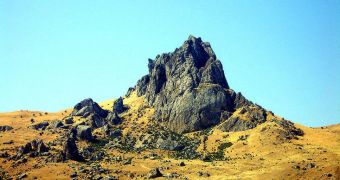A new long-term investigation has revealed that global warming and climate change are having a profound effect on mountain vegetation, especially at low elevations.
The research was carried out by scientists in the United States, who wanted to investigate how vegetation patterns changed on and around mountains over the past 60 years or so
Experts from the US Geological Survey (USGS), the University of Wisconsin-Madison and the University of California in Davis (UCD) collaborated on this investigation.
One of the main applications for the new work is that conservationists could start developing regional landscape predictions, which would enable them to gain an idea of how that environment will react to climate change.
An important consequence of this investigation is that it provides additional demonstrations that global warming is indeed affecting vegetation and ecosystems at lower altitudes more than those at higher altitudes.
“This study shows the possibility for successfully predicting specific ecosystem responses to climate change,” explains Jim Grace, an investigator with the USGS.
“We are not accustomed to predicting the behavior of complex ecological systems, yet this is exactly what our responsibilities to future generations require of us,” he goes on to say.
Details of the new investigation can be found in the latest online issue of the esteemed journal Proceedings of the National Academy of Sciences (PNAS).
The team surveyed an area in the Siskiyou Mountains of Oregon, which is home to about 131 species that cannot be found anywhere in the world. The group kept an eye on this region for 60 years.
“We were surprised to find such clear signals of climate change in these plant communities, given all the other ecological changes that may be going on in the region, such as logging and fire suppression,” adds UCD professor Susan Harrison.
“We have lacked the historic data from multiple communities in a single region to be able to test if there are differences in how they respond to climate change,” UWM scientist Ellen Damschen adds.
“The results are profound in that the shifts we will see as a result of climate change may differ over very small spatial scales,” she says.
For low-elevation forests, the team concluded, drought stress was the main stressors. This was also found to be a problem in primary and secondary forests as well.

 14 DAY TRIAL //
14 DAY TRIAL //